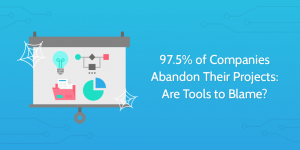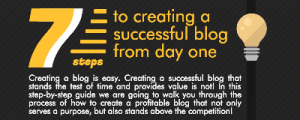— September 27, 2017
These days, it is no longer enough to argue that enterprise companies are too big to bother with social media. Remember this Sales 101 basic: be where your market is. Right now, they are online.
The numbers are daunting. Of the 7.3 billion global population as of July 2015, more than 3 billion use the internet. Of these, more than two-thirds are on social media. Facebook has 1.7 billion users; LinkedIn has 450 million. Plus, more than 90 percent of brands are on at least two social media platforms.
It’s not just the wide use of social media that drives companies to explore social selling possibilities. According to a May 2017 Forrester Consulting survey (done for Hootsuite), there is a general discontent with how typical salespeople conduct selling.
Majority of the respondents believe that salespeople come to the table with an agenda, regardless of its fit as the solution to the customer’s problems. The internet – and to a good degree, social media – empowers buyers to do something about it. They are doing their own research, educating themselves, and sometimes opting to make purchases without the intervention of a salesperson.
Traditional sales strategies, such as outbound B2B sales, have become less effective because of this shift. Callback rates are down, dipping to below 1 percent; while only 24 percent of sales emails are opened.
Businesses, big and small, have needed to support their outbound sales strategies with social selling. It is now a necessary component of your sales team’s toolbox. And, even big enterprises are taking heed.
What Is Social Selling?
Social selling expert Koka Sexton describes social selling as: “Leveraging your professional brand to fill your pipeline with the right people, insights, and relationships…. But at a very base level, it’s how a salesperson uses social media to listen and engage with decision makers that are on these networks, asking questions and looking for help.”
It is different from social media marketing. Marketing targets many. It is about your messaging and building brand awareness on social media. With social selling, much like traditional selling, your goal is to engage and build relationships. The difference is that you do it online through focused useful content and active participation in social media conversations.
Sounds easy but as Richard Young, Sales Director at Fonteva, says in an interview with Timothy Hughes: “Ultimately, if you are poor at sales offline, you’re going to be poor at sales online. That’s the reality…. It’s not going to fix things for you. It’s just another toolset that the salesperson has and should be leveraging, particularly if you’re in the more complex B2B sales or anything relationship-oriented.”
B2B Enterprises and Social Selling
There are observed benefits from adopting social selling strategies, particularly for B2B enterprises. A Social Centered Selling and A Sales Guy research claims that more than 72 percent of sales professionals who included social selling strategies in their process performed better than their peers. These “social” sales reps are said to be more likely to hit their targets by 23 percent. In the case of Eloqua, a software company, their average sales cycle has decreased by 20 days, with 25 percent more leads that convert to opportunities. Another research by NoMoreColdCalling.com claims that referrals made through social selling lead to a 50 percent higher close rate.
Our exclusive interview with Neal Schaffer, one of Forbes Magazine’s Top 50 Social Media Power Influencer, confirms this trend: “What elements of social media can we add to make our sales process more effective? To generate more leads, to shorten the sales cycle, to close more leads and to generate more revenue…. The distinguishing fact in B2B is that you’re selling to a large organization and social media helps you map out those organizations. It also gives you advice on how to engage… and, allows you to engage with a broad number of people…. B2C does not need that one-to-many approach, so I would argue that social selling is more appropriate to B2B for that reason.”
He adds that should an enterprise choose to continue ignoring social media: “Fewer and fewer companies reach out to them. Their competitors have a competitive advantage in that they are using communication channels that their new customer – the new digital buyer – is using and meeting them in the platform where they are active. Those who don’t engage get lost and don’t get found from a digital buyer’s perspective.”
Enterprise Adoption of Social Selling
Interestingly, among the B2B companies surveyed in the Forrester study, there is a decreasing resistance to social selling.
The study has found that almost all the surveyed companies see a long- and short-term value in social selling. Almost half of these have a social selling program in place; while 28 percent are in the process of developing their own programs. 36 percent actually believe that the future of sales is in social selling.
So despite perceived resistance, enterprise companies are getting into social media. It’s now just a matter of implementing suitable social selling strategies while foregoing those that no longer work.
Why Social Selling?

At the root of the shift towards social selling is the changing buyer’s journey. Digital innovations have empowered buyers to go on a self-guided journey to educate themselves and make informed purchasing decisions. As a survey by SiriusDecisions points out, 67 percent of the buyer’s journey is digital. A buyer’s mind is 57 percent made up before they meet (if they meet) a salesperson.
This leaves your marketing and sales teams with an immense challenge: how do you reach out to the digitally-empowered B2B buyer?
From Cold Calls to Social Media
In the interview with Hughes, Young has said that: “A referral is worth so much more than just getting somebody on the phone and having that initial conversation through a cold call.”
And this is very true today, with more than 90 percent of surveyed decision makers no longer paying attention to cold calls and emails. It has become necessary for leads to at least be warm. There should be an established connection or relationship. Call cold and only 4 percent of surveyed buyers get a favorable impression. Having a mutual connection, however, ups the favorability to 87 percent. As Social Sales Link CEO Brynne Tillman puts it: “LinkedIn is a searchable rolodex of all your connections’ connections.”
Reliance on Social Media
Majority of B2B buyers across all age groups rely on social media, according to a 2014 IDC study. To be exact, 3 out of 4 B2B buyers and 8 out of 10 executive buyers use social media when making purchasing decisions. The study also points out that these people are more frequent and influential buyers who have bigger budgets.
Content Engagement, and the Alignment of Sales and Marketing
Your content plays a key role in reaching out to the digital buyer. It is how you educate and influence, even when your customer hasn’t reached out to your sales team. In fact, according to the 2017 Forrester study, 82 percent of B2B buyers say that their top vendor choices offered helpful social media content. This is supported by a LinkedIn study, which claims that buyers are 5X more engaged when you offer educated insights on the industry.
The aligned efforts of your sales and marketing teams are necessary when you want on-message content that is helpful and influential. Your goal is to provide your customers with the information and push they need to take the next step with you.
Word of Mouth Recommendations
Social media is brimming with recommendations, reviews and cautionary tales that sometimes go viral. It has become common practice to go online when seeking out recommendations and referrals from your peers. Of the surveyed B2B buyers, 84 percent say that they start their purchasing research with referrals. If you don’t have an active social media presence, you will likely miss out on referral business that comes to you through your brand advocates.
An Easy Start
It doesn’t take much to get started in social selling. Your sales team needs to just devote at least 5 to 10 percent of their time to social media activities that support their current sales strategies. It could be as simple as checking professional connections at LinkedIn before making calls, or researching on your target company’s current pain points.
The time spent here will, of course, not immediately convert to sales. It is an investment in social engagement, and ideally a start of co-beneficial business relationships.
Getting Started With Social Selling

“Social selling in the enterprise has to start with strategy. Many sales executives who would never go without a common sales methodology or CRM system have yet to establish a common social selling methodology and set of tools. The result is a wide variety of individual skills and processes that cannot be managed effectively.” – Kurt Shaver, Founder of The Sales Foundry
Indeed, it is one thing to be online and a part of the social networks. It is another to do social selling right. Here’s a simple starter social selling template to follow. Measure to see what works and what doesn’t, and then tweak to suit your business.
Get an Executive Buy-in
Incorporating social selling into your current enterprise sales strategies has to be a top-down initiative. After all, being online and social will take time away from measurable sales efforts, such as calls or presentations made per day. The problem is that the ROI from being on social media may not be immediately felt. Social selling needs to be viewed as an investment, and not a waste of time.
It is a hard sell, according to Schaffer, but he affirms: “Once they see the light, they do become invested in it. Those who have the most experience professionally will definitely find it easiest to understand and become an active social seller. You don’t have to me a millennial and in your twenties to get it.”
Stay Focused on Your Professional Brand
Staying on message is supposed to be easy for professional marketing and sales teams. Your brand is something ingrained in you since you began working with the company.
However, as we’ve seen with other brands, things can get awry when it comes to social media’s real-time conversations. From fast food joints that go way too political or pasta brands that alienate 10 percent of its market, your professional brand can get muddled up fast. So, stay focused. Keep personal opinions to your personal social media accounts or, better yet, offline.
Take it from Sexton: “The first thing you should focus on is your professional brand. A salesperson could be trained in the best practices of identifying and engaging decision makers across any number of social platforms; but if their professional brand looks like garbage, they’re going to be discounted immediately.”
Stay Visible
Sexton says: “Visibility creates opportunity.” This is one of the first major challenges you face in establishing your social selling presence. How do you reach out to the decision makers and buyers in the different social media platforms? How do you become the “voice” of the industry, such that these buyers will seek you out and listen to what you have to say?
It starts with your content. Offer relevant content that offers solutions to common pain points. Be available to discuss with your audience. Get involved in business groups and community discussions.
Plus, make sure to offer valuable help. You don’t have to endorse your brand each time you post online. That’s too obvious and you only expose your social selling agenda. Be helpful and insightful in your inputs.
Do the Work
Social media gives you access to a wealth of information about your target market, decision makers and buyers. It allows you to connect with them and start conversations. It gives you insight on their mindsets and business pain points. However, remember that you need to do some work too. These social media perks won’t magically churn out hot leads for you. It won’t guide you on how to engage with them effectively. What you do with all that social media offers – how you turn these advantages to sales – is up to you.
Listen
According to the Forrester survey, more than 50 percent of surveyed B2B companies use social media to generate leads and contacts. However, very few of them use social media to listen to market sentiments. This represents a missed opportunity.
The Forrester study says: “Although 77 percent of respondents reported adoption of a social listening platform, sales teams are not adequately leveraging these tools. Sellers are 18 percent behind marketing peers who use social to listen to buyer preferences.”
Continue Learning
75 percent of surveyed B2B salespersons say they were trained in how to effectively use social media for social selling. The training ranges from basic guidelines in online engagement to the use of the company social media software. Given the continuous flow of online booboos even from big corporations like McDonalds or Delta, this isn’t enough. Consistently assess your social media engagements, and provide further training for your sales and marketing teams. New books and educational courses are always coming out on the topic.
Digital & Social Articles on Business 2 Community
(86)
Report Post




